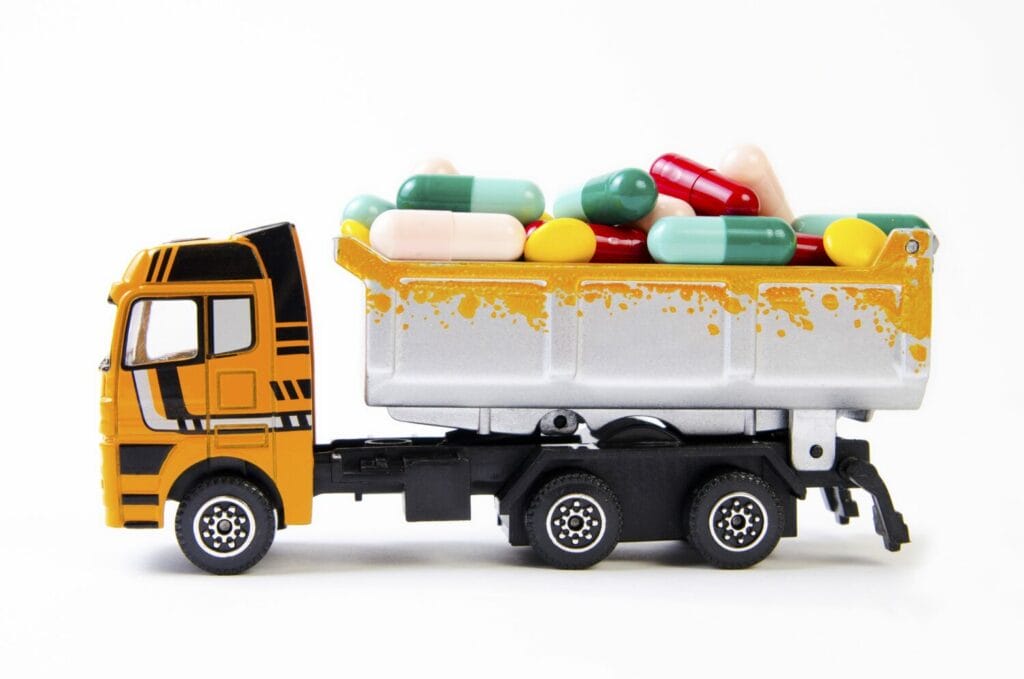Transporting and shipping cellular and gene therapy products requires precision and compliance with rigorous standards. These innovative therapies are sensitive to environmental conditions and must be handled meticulously to preserve their efficacy.
The logistics team must ensure temperature-controlled environments from departure to arrival, maintaining the integrity of these delicate materials. Regulatory guidelines are stringent, necessitating adherence to ensure safety and quality.
Companies must invest in specialised packaging solutions and real-time tracking systems to mitigate risks during transit. Effective communication among all parties involved is crucial to successfully delivering these advanced medical treatments to patients who depend on them.
Overview of Cellular and Gene Therapy
Cellular and gene therapy represent cutting-edge advancements in medical science, offering promising solutions for previously untreatable conditions. These therapies work by modifying genetic material or harnessing the body’s own cells to directly target disease at its source.
Key Components
- Cell Therapy: Involves the transplantation of live cells to replace or repair damaged tissue.
- Gene Therapy: Focuses on rectifying defective genes within a patient’s cells to treat disease.
Current Trends and Innovations
- Personalised Medicine: Tailoring treatments to individual genetic profiles ensures higher efficacy and reduced side effects.
- CRISPR Technology: Revolutionising gene editing with precision and speed, marking significant progress in developing targeted therapies.
- Regulatory Advancements: Evolving regulations streamline the approval process, enhancing access to life-saving treatments.
The Unique Challenges in Transporting Cellular and Gene Therapy Products
Temperature Control
Maintaining cold chain logistics is critical for cellular and gene therapy products. Proper temperature management is key to preserving the treatment’s potency.
Fluctuations can compromise product integrity, leading to ineffective therapies upon delivery.
- Cold Chain Logistics: Essential for maintaining stability and efficacy.
- Temperature Fluctuations: Can degrade the product, making reliable monitoring systems vital.
Regulatory Compliance and Safety
Meeting the strict regulatory standards set by authorities like the TGA (Therapeutic Goods Administration) ensures these products are safe and effective when they reach patients. Compliance with these regulations is non-negotiable and requires detailed documentation and careful handling practices.
- Regulatory Standards: Essential to protect patients and ensure product quality.
- Safety Protocols: Mitigate risks associated with transporting sensitive medical products.
Packaging and Labelling
Packaging must not only protect delicate materials from external elements but also facilitate easy identification. Advanced packaging solutions are designed to simultaneously safeguard the product and communicate important handling instructions.
- Innovative Packaging Solutions: Tailored to the unique needs of medical therapies.
- Clear Labelling: Ensures proper handling instructions are visible and understood.
Logistical Coordination
Successful delivery hinges on proactive coordination across all facets of the supply chain. This includes aligning manufacturers, transport providers, and healthcare facilities to minimise delays.
A seamless supply chain:
- Collaboration: Between all parties involved to ensure timely delivery.
- Efficient Communication: Essential to avoid unnecessary hold-ups and ensure patient readiness.
Best Practices for Safe and Efficient Shipment
Ensuring safety and efficiency in shipping cellular and gene therapy products requires a strategic approach. By adopting these best practices, companies can improve both reliability and patient outcomes.
Advanced Monitoring Systems
Implementing cutting-edge monitoring systems is crucial. These systems enable real-time tracking and environmental monitoring, ensuring any deviations from optimal conditions are immediately identified and addressed.
- Temperature Sensors: Provide constant temperature updates to prevent product degradation.
- Real-Time Alerts: Notify stakeholders of potential issues, allowing for quick corrective actions.
Training and Education
Equipping handlers with the necessary knowledge and skills is fundamental to maintaining product integrity. Regular training sessions help personnel stay informed about the latest protocols and technologies.
- Regular Training: Focuses on the unique requirements of these products.
- Educational Workshops: Enhance understanding of advanced handling techniques.
Collaboration and Partnerships
Strong partnerships across the supply chain foster seamless operations. By working closely with logistics providers and regulatory bodies, companies can streamline processes and mitigate risk.
- Integrated Partnerships: Facilitate smoother transitions and coordination.
- Regulatory Collaborations: Aid in staying compliant and improving shipment efficacy.
Trends in Cold Chain Technology
The rise of mobile cold chain technologies has revolutionised transport solutions. These portable systems offer flexibility and reliability, ensuring products remain within the necessary parameters throughout the journey.
- Mobile Cold Chain Solutions: Enhance flexibility and control.
- Innovative Insulation: Minimises thermal exposure risks during shipment.
The Future of Transporting Cellular and Gene Therapy Products
The transport of cellular and gene therapy products is rapidly evolving, driven by technological advancements and increased demand for these specialised treatments. This progress introduces various opportunities and challenges that will shape the future landscape of medical logistics.
Emerging Technologies
Harnessing new technologies is crucial for the next phase in logistics. Innovative solutions enhance efficiency and product safety.
- Blockchain Technology: Provides transparency and security in tracking shipments, reducing chances of errors and loss.
- Advanced AI Systems: Drive predictive analytics to anticipate risks and enhance decision-making processes.
- Smart Packaging: Utilises integrated sensors to monitor and adjust conditions in real-time, preserving the integrity of sensitive therapies.
Industry Collaboration
Collaboration among industry players, regulatory bodies, and research institutions is vital to overcoming logistical challenges.
- Public-Private Partnerships: Facilitate resource sharing and innovation, fostering an ecosystem conducive to growth.
- Research Collaborations: Drive scientific breakthroughs and streamline regulatory approvals.
- Global Alliances: Enhance cross-border trade efficiency, ensuring faster and more reliable delivery to international markets.
Sustainability in Logistics
Sustainability is an emerging priority, with companies striving to reduce their environmental impact.
- Eco-Friendly Packaging: Developed from biodegradable materials to lessen waste and carbon footprint.
- Optimised Routing: Minimises energy and fuel consumption, contributing to greener transport solutions.
Consumer-Centric Solutions
Focusing on patient needs enhances the effectiveness of delivery systems and improves patient satisfaction.
- Direct-to-Patient Models: Offer convenient and timely access to treatments, particularly in remote regions.
- Personalised Delivery Options: Tailor services to individual preferences, boosting engagement and adherence to treatment protocols.
Ready to transform your logistics strategy for cellular and gene therapy products?
Successfully transporting cellular and gene therapy products demands a multifaceted approach. With these elements working in harmony, companies can ensure the safe and efficient delivery of these groundbreaking treatments to patients worldwide.
As the industry continues to evolve, embracing emerging technologies and sustainable practices will be critical. Through collaboration, forward-thinking strategies, and a patient-centric focus, the medical logistics field will be well-equipped to support the growing demand for personalised and innovative therapies.


